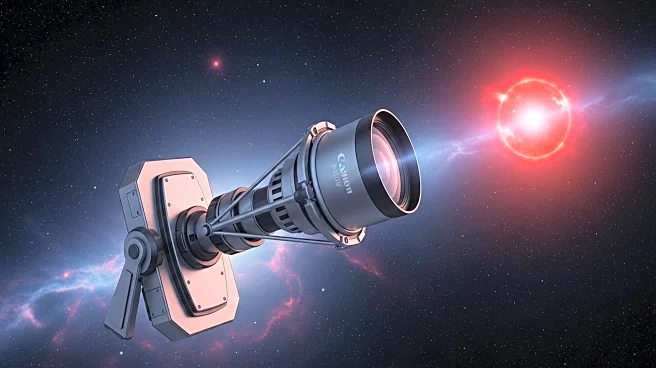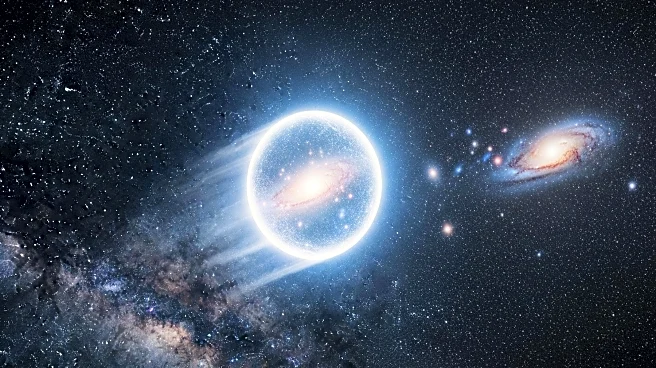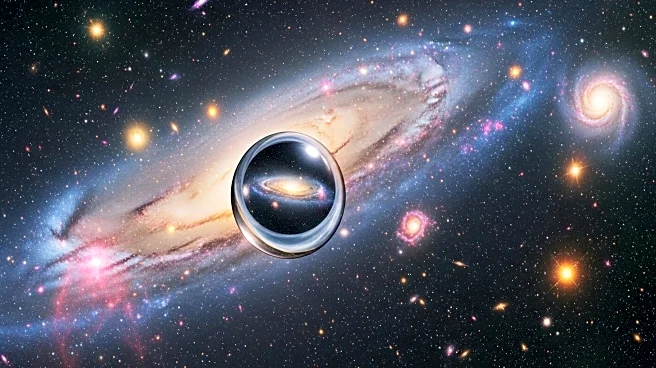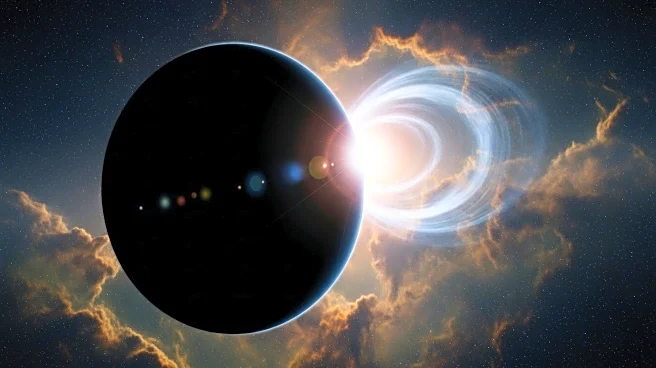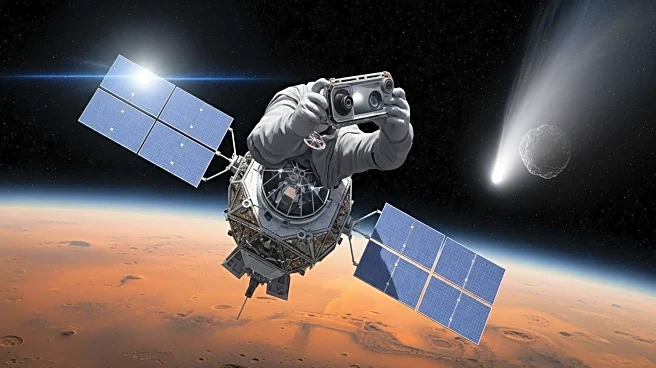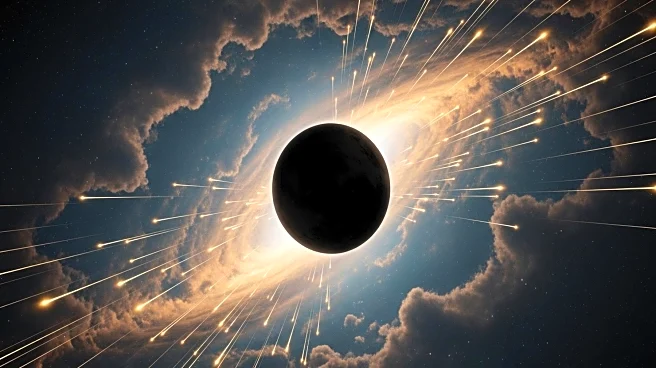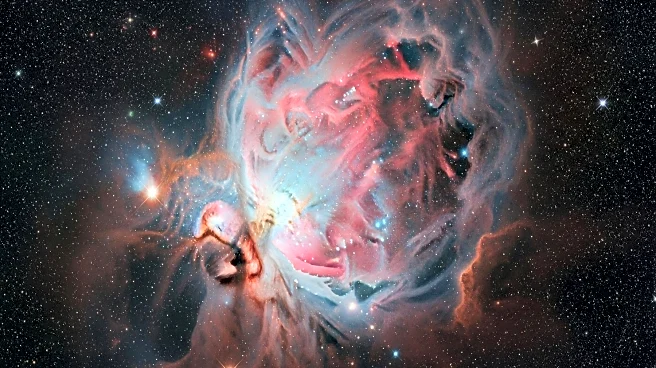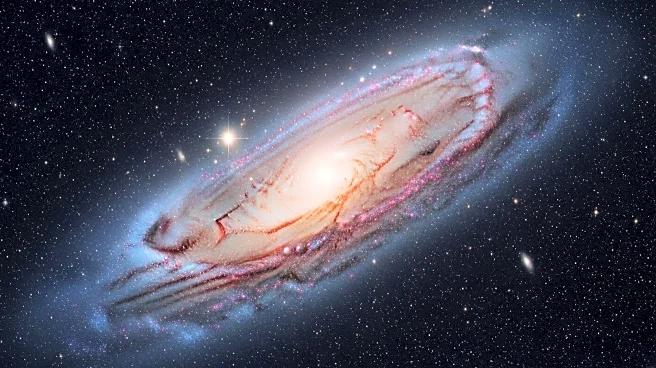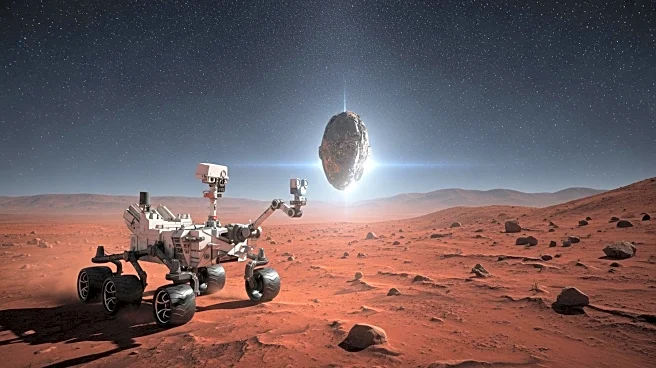What's Happening?
A team of astronomers from Northwestern University has utilized NASA's James Webb Space Telescope (JWST) to capture the most detailed view of a dying star before its explosion. The star, a massive red supergiant, was obscured by a thick blanket of dust, which JWST's infrared capabilities penetrated to reveal the star's final moments. This discovery helps explain why red supergiants are rarely seen exploding, despite predictions that they should account for most core-collapse supernovae. The findings, published in The Astrophysical Journal Letters, mark JWST's first confirmed detection of a supernova progenitor star.
Why It's Important?
This breakthrough is significant as it bridges the gap between theoretical predictions and observational evidence regarding red supergiant explosions. The ability to see through dust clouds with JWST's infrared technology provides new insights into the life cycles of massive stars and their eventual collapse into supernovae. Understanding these processes is crucial for astrophysics, as it informs models of stellar evolution and the chemical enrichment of galaxies. The discovery also highlights the potential of JWST to uncover hidden aspects of the universe, advancing scientific knowledge and technology.
What's Next?
Astronomers are now searching for similar red supergiants that may explode as supernovae, using JWST and upcoming telescopes like NASA's Nancy Grace Roman Space Telescope. These observations could reveal more about the variability and dust production of massive stars nearing the end of their lives. The continued study of supernova progenitors will enhance our understanding of stellar evolution and the formation of neutron stars and black holes. This research may lead to new theories and models in astrophysics, influencing future scientific exploration.
Beyond the Headlines
The discovery raises questions about the nature of dust production in massive stars and its impact on visibility. It challenges existing assumptions about the brightness and detectability of supernova progenitors, prompting a reevaluation of observational strategies. The cultural significance of such discoveries may inspire public interest in space exploration and the mysteries of the universe. Ethical considerations regarding the prioritization of scientific research over other societal needs may also arise.

